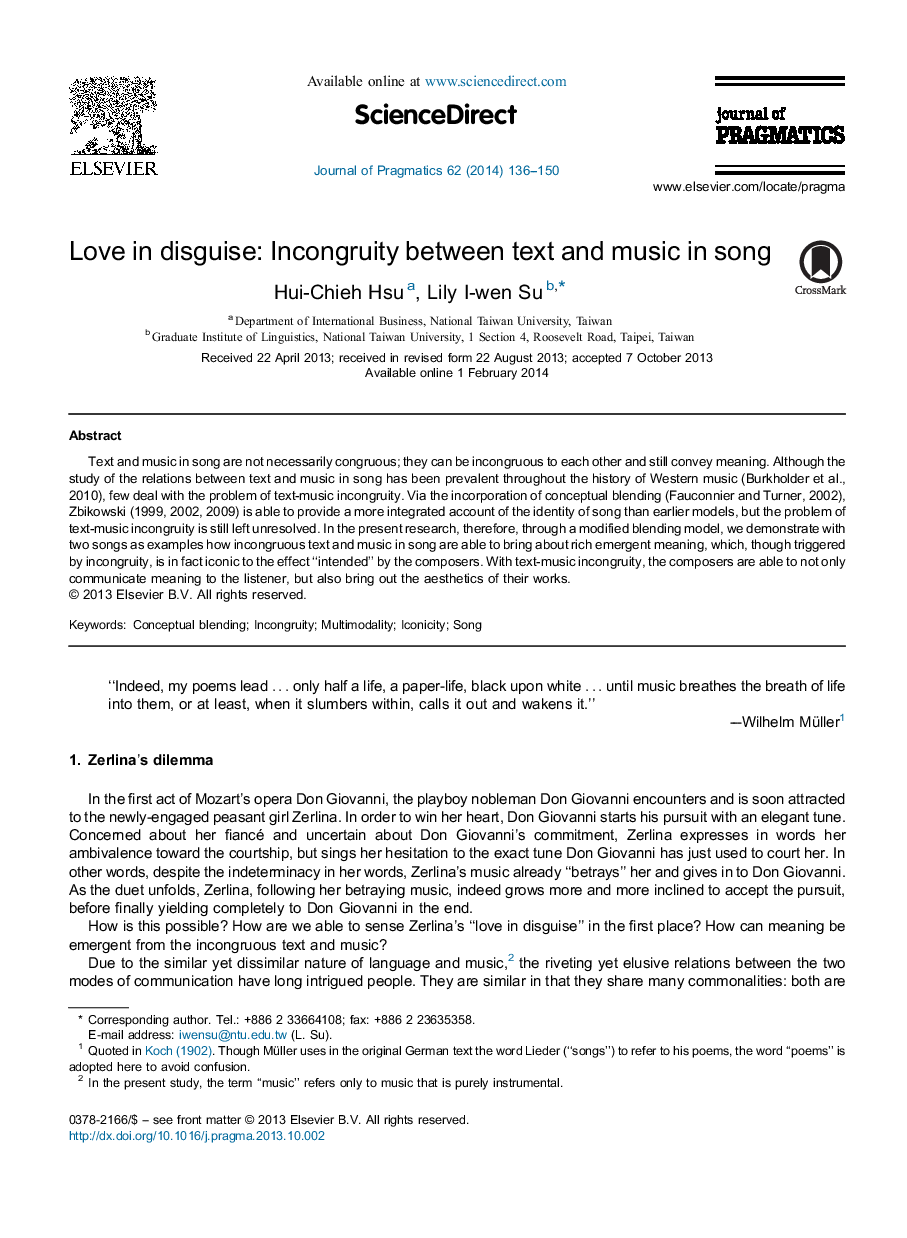| کد مقاله | کد نشریه | سال انتشار | مقاله انگلیسی | نسخه تمام متن |
|---|---|---|---|---|
| 932769 | 1474738 | 2014 | 15 صفحه PDF | دانلود رایگان |
• Text and music in song can be incongruous and still bring about rich emergent meaning.
• Meaning emergent from incongruity is in fact iconic to the composer's “intention.”
• The rich and immediate effect of song is attributable to its multimodal nature.
• The typology of integration networks has much to do with the resulting emergent effect.
• Beneath text-music incongruity lies the composer's aesthetical concern.
Text and music in song are not necessarily congruous; they can be incongruous to each other and still convey meaning. Although the study of the relations between text and music in song has been prevalent throughout the history of Western music (Burkholder et al., 2010), few deal with the problem of text-music incongruity. Via the incorporation of conceptual blending (Fauconnier and Turner, 2002), Zbikowski (1999, 2002, 2009) is able to provide a more integrated account of the identity of song than earlier models, but the problem of text-music incongruity is still left unresolved. In the present research, therefore, through a modified blending model, we demonstrate with two songs as examples how incongruous text and music in song are able to bring about rich emergent meaning, which, though triggered by incongruity, is in fact iconic to the effect “intended” by the composers. With text-music incongruity, the composers are able to not only communicate meaning to the listener, but also bring out the aesthetics of their works.
Journal: Journal of Pragmatics - Volume 62, February 2014, Pages 136–150
